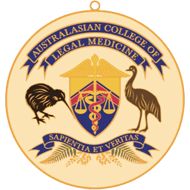Medicolegal Problems
To establish a case in Australian civil law for medical negligence there are 4 elements required for proof:
- The doctor owed a duty of care to the patient.
- The doctor breached that duty of care.
- The breach caused the damage/injury (more probably than not)-'Factual causation' and 'Scope of liability'.
- The damage was foreseeable.
The key to proving a breach of the duty of care is to establish that the doctor's actions lay outside the norms of recognised diagnosis or treatment as viewed by contemporary peer professionals. The Defence is not required to prove that the vast majority of clinicians approve of the management in question, simply that there is a significant group (albeit a minority) of clinicians who subscribe to that management. Management must however be 'reasonable' (modified Bolam principle) in the eyes of the Court. For example a management which was outrageous or lacked any validity or credibility might be deemed by the tribunal of fact as unreasonable and therefore a breach of duty. In a lawsuit in which negligence is alleged, the harm suffered by the Plaintiff must have resulted directly from the negligence of the Defendant that is: 'factual causation' must be demonstrated. 'Scope of liability' arguments include whether the doctor can be held liable for the damage sustained by the Plaintiff: For example there may be no liability if the damage which occurred was too remote from the management to establish cause and effect'.
Damage may be physical, psychological or financial.
There are varied time limits in Australian jurisdictions as to the eligibility to make a claim. For example in adult management this may be quite short as it is in the ACT, NSW & Queensland where the limit is 3 years following the incident. In other States action is limited to 3 years from the discovery of negligence in Victoria, Tasmania and Western Australia. In the Northern Territory a claim must be initiated within 3 years from the time the victim becomes aware of the cause of action.
In obstetric and gynaecological terms the common circumstances which prompt medico-legal action include:
- Cerebral palsy (only 10% are associated with birth injury)
- Mechanical injuries to babies during birth.
- Failure to recognise serious fetal heart rate abnormalities in labour.
- Failure to diagnose genetic or structural anomalies in the unborn child.
- Failure to diagnose or prevent Group B sepsis in the fetus or neonate.
- Intrapartum stillbirths or neonatal deaths following poor management in labour including home births.
- Genital tract injuries from vaginal births including fistulae.
- Bowel ruptures or damage following Caesarean section.(Ogilvie's syndrome)
- Poor intrapartum management leading to massive obstetric haemorrhage.
- Failure to diagnose life-threatening conditions such as cervical cancer.
- Failure to warn about potential complications of treatment.
- Unauthorised additional gynaecological surgery.
- Complications from minimally invasive surgery including endometrial ablations and laparoscopic treatment of endometriosis, fibroids or hysterectomy.
- Complications arising from the use of mesh during prolapse surgery.
- Failure to prevent pregnancy e.g. by female sterilisation.
- Criminal injury leading to miscarriage: common or sexual assault causing grievous bodily harm.
) Author:Dr Mike O'Connor
Author:Dr Mike O'Connor| Tags:Medicolegal |








